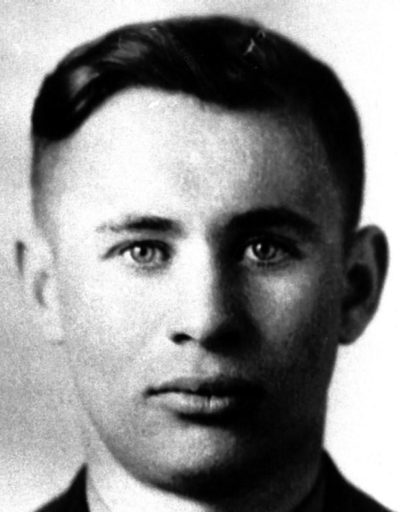Valentin Bondarenko (Valentin Vasiliyevich Bondarenko)

Valentin Bondarenko was born in Kharkiv, Ukrainian SSR, Soviet Union. His father was sent to the Eastern Front in the first days of World War II. The youngster and his mother went through several years of hardship during the war. From an early age, Bondarenko was fascinated by aviation heroes and dreamed of becoming a military aviator himself. While still at Kharkiv’s Higher Air Force School, he was a member of the local aviation club. After Bondarenko’s graduation in 1954 he was admitted to the Voroshilov Aviation Military Academy and a year later he was transferred to an air force college in Grozny, Armavir Military Pilot Aviation School, from which he graduated in 1957. In 1956 he married Galina Semenovna Rykova, a medical worker. Their first child was born later that year. During 1956, Bondarenko was sent to Armavir Higher Air Force Pilots School, graduating in 1957—the same year Sputnik 1 was launched. Bondarenko was commissioned a Second Lieutenant and served in the Soviet Air Force’s PribVO (the former Baltic Military District). On 28 April 1960, Valentin Bondarenko was chosen to be among the first group of 20 cosmonauts. Bondarenko, “(also known as ‘Valentin Junior’ and ‘Tinkerbell’) was the youngest member of the cosmonaut team.” He began training on 31 May for a planned launch on the manned Vostok spacecraft. According to his fellow cosmonauts, Bondarenko was a mild-mannered person with a pleasant disposition. He had a good singing voice and played tennis well.
23 March 1961 was the tenth day of a 15-day endurance experiment in a low pressure altitude chamber at the Institute of Biomedical Problems in Moscow. The chamber’s atmosphere was at least 50% oxygen. Bondarenko, having completed work for the day, removed some monitoring biosensors from his body and washed his skin with an alcohol-soaked cotton ball, which he then carelessly threw away. The cotton ball landed on an electric hot plate which he was using to brew a cup of tea. The cotton ignited and Bondarenko tried to smother the flames with the sleeve of his woolen coveralls, which caught on fire in the chamber’s oxygen-rich atmosphere. Because of the pressure difference, it took a watching doctor nearly half an hour to open the chamber door. Bondarenko’s clothing burned until almost all the oxygen in the chamber was used up and he had suffered third-degree burns over most of his body. The attending physician at Botkin Hospital, surgeon and traumatologist Vladimir Golyakhovsky, recalled in 1984 that while attempting to start an intravenous drip, the only blood vessels he could find for inserting a needle were on the soles of Bondarenko’s feet, where his flight boots had warded off the flames. According to Golyakhovsky, cosmonaut Yuri Gagarin spent several hours at the hospital as “deathwatch officer” and Bondarenko died of shock 16 hours after the accident, less than three weeks before Gagarin’s historic Vostok 1 first spaceflight. Manned orbital flight program director Nikolai Kamanin blamed Bondarenko’s death on the Institute’s poor organisation and control of the experiment. Valentin Bondarenko was buried in Lipovaya Roshcha in Kharkiv, where his parents were then living. On 17 June 1961 the Presidium of the Supreme Soviet posthumously awarded Bondarenko the Order of the Red Star.
Born
- February, 16, 1937
- Kharkiv, Ukrainian SSR, Soviet Union
Died
- March, 23, 1961
- Moscow, Russian SFSR, Soviet Union
Cause of Death
- fire in altitude chamber

